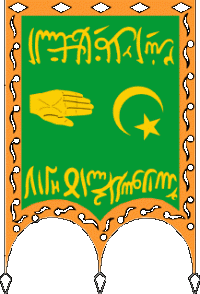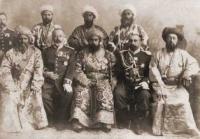Вы здесь
Bukhara of amirats.


One day excursion in Bukhara and Samarkand
“History is the mentor of life”
Mark Tullius Cicero.
Tours of the ancient monuments of the surroundings of Bukhara.
Amur Bukhara (1747 - 1920). After the invasion of Nadir Shah, the Bukhara Khanate became for a time the possession of the Shah of Iran. The economy fell into decay, the population became impoverished. Then Chingizids lost control of the country and from 1747 power passed to the Amirs of the Mangytov dynasty.
Under the first rulers - Rahim-bie (died in 1758) and Daniyar-bie (died in 1785) - civil strife between supporters and opponents of Mangytov continued. The Fergana possession separated from the Bukhara Khanate, where the independent Kokand Khanate was formed.
After the 1784 grud of Bukharians revolted against the weakened power of Daniyar-biya, he conceded the throne to his son - Sufi Shahmurad (1785 - 1800). The new ruler freed the inhabitants of Bukhara from most taxes, but introduced a tax on the maintenance of troops.
Shahmurad returned the left bank of the Amu Darya to Amirata, suppressed the uprising in Kermin, made trips to Shahrisabz and Khojent, successfully fought with the Afghans. Amir Khaydar (1800 - 1826), the son of Shahmurad, had to defend the conquest of his father in continuous wars.
Khaydar was succeeded by his son Nasrulla (1826-1860), who led the border wars with the Khiva and Kokand khanates. In the middle of the XIX century. The territory of the amyrate was about 225 thousand square meters. km, population - about 3 million people.
Enlightener:
VG Saakov "History of Bukhara". Shark Publishing House, 1996. “Bukhara. Masterpieces of Central Asia. Historical guide to Bukhara. year 2012. "Bukhoro Bukhara Bukhara" In Uzbek, English and Russian. Publishing House "Uzbekistan", Tashkent 2000. Muhammad Narshahi. History of Bukhara. Tashkent. 1897 (translated by N. Lykoshin). V.G. Saakov Architectural masterpieces of Bukhara. Bukhara regional society "Kitabhon" Uz SSR, Rovno 1991, Robert Almeyev. The history of ancient Bukhara. (Edited by Academician of the Academy of Sciences of the Republic of Uzbekistan Rtveladze E.V.)







